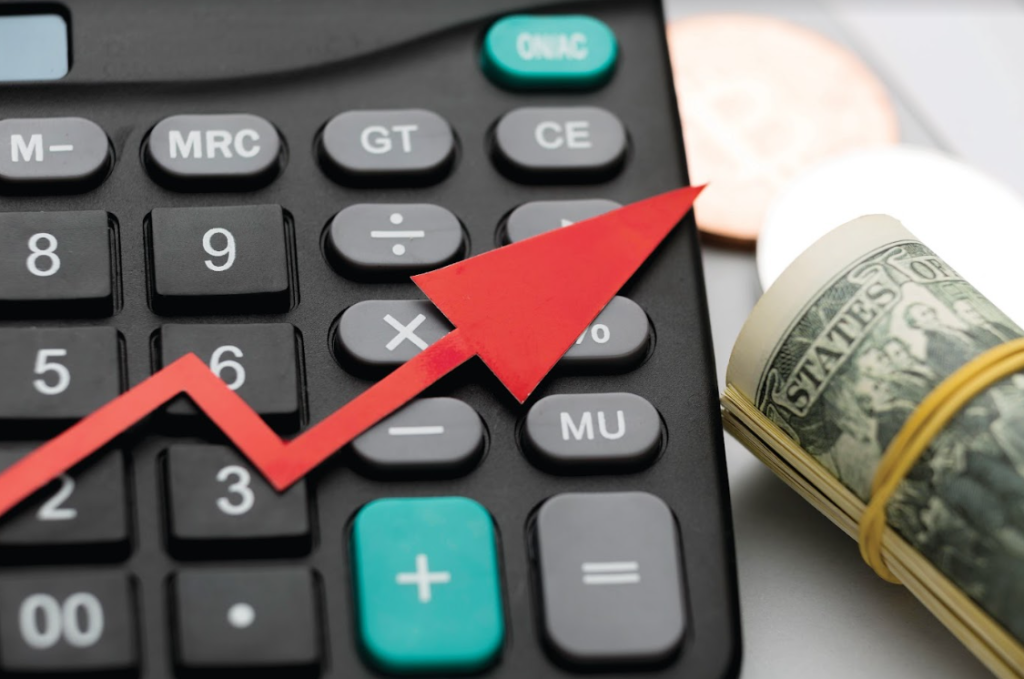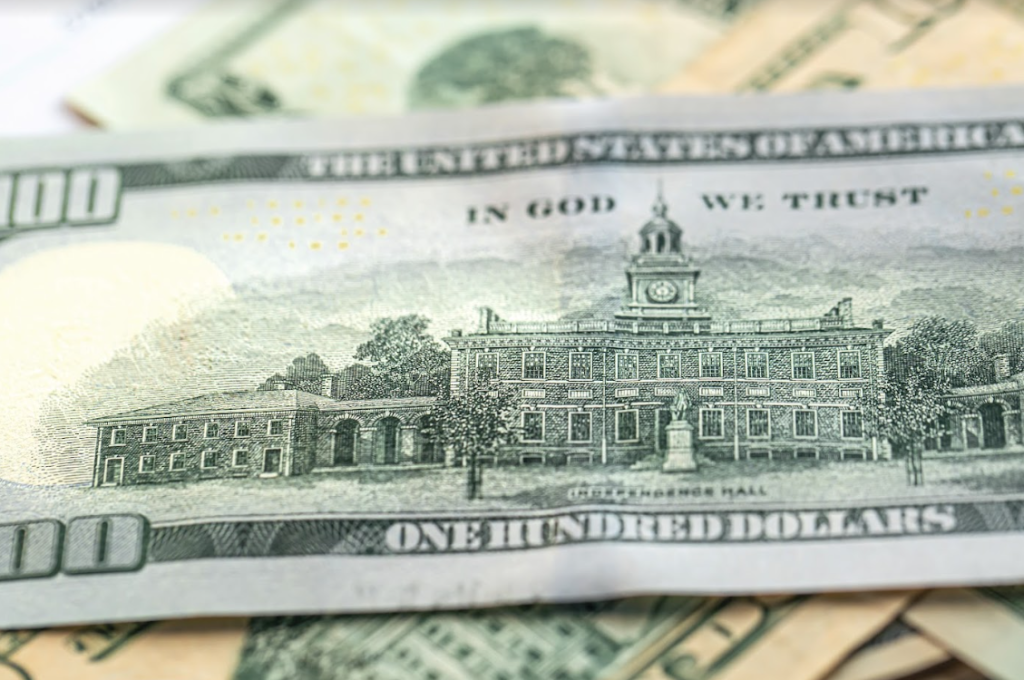Despite signs that inflation is starting to recede, many economists still anticipate that the higher interest rate will plunge the US economy into a recession in 2023. However, other financial experts believe this recession would not affect the world’s economy terribly
By M R Dua
- A ‘recession’ is a significant, widespread and prolonged downturn in economic, financial, and commercial activity
- Even a mild recession could cost the US economy 1.8 million jobs if the nation’s GDP declines by 1.2% and the unemployment rate rises
- Employment is a coincident indicator whereas the only genuine leading indicators in the employment report
- The last recession in the US occurred between February 2020 and April 2020. Known as Covid-19 recession, it was severest
As the new year dawned in the US, everyone whose business or calling is in any area of the financial sector, was anxious to learn –how well or ill would the widespread expectation that the recession will transform the entire world of finance. Last December, US Federal Reserve (US Central Bank) Chairman Jerome Powell apprehended massive political upheaval and felt urgent that the ‘Fed must continue its war on inflation no matter what the consequences for unemployment and growth.’ Therefore, fearing that, he had quickly affected several significant alterations in the interest rates, more than half a dozen.
As a result, many reputed economists and financial wizards made worrying statements seeing high-interest rates, highly uncertain, shaking economic trends, prompting immensely volatile markets and raising doubts that the US economy will be adversely hit by recession in 2023, though it was hoped that somehow the American economy may not have to experience severe recession. What was expected to occur was, as other financial experts averred, that the 2023 recession may be less severe, and less comfortable. Yet more confident predictions insisted: the ‘downturn is imminent.’
WHAT IS RECESSION?
A ‘recession’ is a significant, widespread and prolonged downturn in economic, financial, and commercial activity in the nation’s market in any country. Economists, business analysts and financial strategists often brand such downturns, shrinkages and contractions lasting six months or more, one popular rule of thumb is that ‘two consecutive quarters of decline in a country’s Gross Domestic Product, generally known as GDP constitutes a recession.

Many reputed economists and financial wizards made worrying statements seeing high-interest rates, highly uncertain, shaking economic trends, prompting immensely volatile markets and raising doubts that the US economy will be adversely hit by recession in 2023
Simply put, ‘as prices of most goods and services of daily use, essential and popular with common people rise, and the gross domestic product decreases, general consumers and frequent users of essential commodities resent the high prices, which is deemed to be the beginning of the potential economic downturn, also called ‘recession.’ Generally, a recession could be a technical recession, or a true recession, explained Sameer Samana, a senior global market strategist for Wells Fargo Investment Institute, a subsidiary of Wells Fargo Bank. A technical recession is more of a mathematical downshift. A true recession is a more meaningful contraction across a broader range of categories.
Therefore, when President Joe Biden said on May 23 last year that ‘he did not believe an economic recession in the United States is inevitable despite record-high inflation and supply shortages partly caused by Russia’s invasion of Ukraine.’
ECONOMIC INDICATORS
However, besides Joe Biden’s prognosis, for his country’s 2023 economic regime, differing forecasts have been deliberated. Yet another bold, firm prediction made by a prominent website (https://www.bankrate.com): The Bankrate’s Fourth-Quarter Economic Indicator Survey has noted that the ‘US economy has 64 percent chance of contracting in 2023,’ according to the average forecast by its economists.
Though only a very small number of economists, around 20 percent, opine that the ‘financial system could avoid a downturn, putting the odds of a recession at 40%. Meanwhile, only one of its economists arrived at 100% odds – signifying he was ‘absolutely certain of a recession.’
According to a Bloomberg Business survey of economists, in December 2022, in the US, there is a 70% chance of a recession in 2023. A recession may be ‘necessary to tame inflation.’ But research shows the ‘harms’ are not distributed equally in the United States. In some cities, it may be a decade or more before their economies get back on track.
Meanwhile, numerous media platforms have reported and have warned from time to time that recession is indeed on the horizon in the United States because there have been ‘massive layoffs’; buying cars will never ‘go back;’ things may get ‘ugly’ at the salesforce; ‘Zoomtowns’ might actually be a good thing; ‘worst is yet to come’; ‘high inflation, rising interest rates, shaky economic activity and volatile markets.’
The International Monetary Fund also warned (Oct 11, 2022) that the ‘world economy was headed for ‘stormy waters’ as it downgraded its global growth projections for 2023, and warned of a ‘harsh worldwide recession if policymakers mishandled the fight against inflation.’ Incidentally, the IMF had earlier declared on June 4, 2022, ‘US economy will narrowly avoid recession in 2022 and 2023.’
The US Economic Outlook too had issued a statement on October 5, 2022, saying: “Recession will add to disinflationary pressure.” The Chief US Economist, Paul Ashworth, underlined that with “likely contraction in exports and imports, the world, and the US, will follow the rest of the global economy into recession.’’
The Economic Outlook has revealed, and also the US Federal Reserve (the US Central Bank) says that ‘recession is still more likely than its soft landing. It was predicted that the US could avoid a recession, but ‘we still think that’s unlikely.’ Employment is a coincident indicator whereas the only genuine leading indicators in the employment report – temporary help employment and hours worked – both point to an imminent recession. In addition, the declines in the latest indices mean that nearly all the forward-looking activity surveys are now at recessionary levels too.
Therefore, even a mild recession could cost the US economy 1.8 million jobs if the nation’s GDP, or economic output, declines by 1.2%, and the unemployment rate rises from a 50-year low of 3.5% to 5.4%. It must be remembered that in October 2022, even though the hiring remained strong and recession fears,’ according to a survey of 50 economists conducted during November 7-8, 2022. This was down from 24% who believed that the Central Bank (i.e., the US Federal Reserve) could pull off a ‘soft landing’ in October 2022, and 38% in September. The vast majority of economists believed recession would be mild, meaning thereby lesser job losses, besides all other indicators. On the other hand, a severe recession would result in enhanced losses all around, including more job losses, etc. Now that 2022 is history, and the global economy seems to be on a safer path, hopefully, the recession will not pose any big world financial crises or any major financial danger.
Finally, provided the ongoing Russia-Ukraine war ends soon, the world can hope to experience better, peaceful times during 2023. However, as the recent World Bank Report has reflected, global inflation, while starting to cool, remains historically high. The forecast growth rate only narrowly keeps the global economy out of recession territory.

According to a Bloomberg Business survey of economists, in December 2022, in the US, there is a 70% chance of a recession in 2023. A recession may be ‘necessary to tame inflation.’ But research shows the ‘harms’ are not distributed equally in the United States. In some cities, it may be a decade or more before their economies get back on track
The international development organisation has cited high inflation, rising interest rates, lower investments and Russia’s invasion of Ukraine as threats to growth along with pandemic-related disruptions in China, and the stress in its real estate sector. Global growth has shown to the extent that the global economy is perilously close to falling into recession.’
Prominent among the globally respected, trade-recognized prediction makers, forecasters, foretellers and soothsayers about the occurrence of the United States and worldwide recession are the World Bank, International Monetary Fund, and the NBER (US National Bureau of Economic Research (NBER).
In India, the Union Finance Ministry-funded, National Council of Applied Economic Research, and other noted economic associations, college or universities departments of economics research, reputed economic financial research outfits, funded by business corporates, voluntary social, cultural, and political organisations, such as Mumbai’s Reliance Foundation, Tata Foundation, etc.
RECESSION TRACKERS IN US
America’s Federal Reserve’s core Personal Consumption Expenditure index (PCE), the Quadratic Capital Management (QCM), and the Institute of Supply Management (ISM) manage the purchase and supply of over 400 industrial companies constantly and keenly observe the price index to monitor and declare a state of recession. All these economic institutions had been announcing from time to time so far that the recession will overtake the US, though their forecasts differed, but they firmly confirmed that the recession was on the way, and will hit the economy.
Similarly, other Recession Trackers of the country’s stock markets; retail sales job data; consumer confidence; the National Federation of Independent Business (NFIB), and Small Business Optimism fell; since the National Home Builders Index suffered hits, the housing market also fell.
However, Taylor Tepper, an award-winning journalist and advisor of Forbes, which is best known for its intent to focus on the top businesses and richest businessmen, has opined that America’s National Bureau of Economic Research (NBER) is ‘vague’ about which exact economic indicators determine recession.
The last recession in the US occurred between February 2020 and April 2020. Known as Covid-19 recession, it was one of the severest and also the shortest in US history. Before that, the period between December 2007 and June 2009, is also known as the Great Recession. But the 2020 Covid recession is known as the severest. Incidentally, says Forbes’s Taylor Tepper, the expansion between the Great Recession and the Covid Recession is the longest business expansion in US history, going back to 1854.
LOW RECESSION PROBABILITIES
Meanwhile, Ethan Harris, a global economist at Bank of America, had not expected any growth in the New Year, with a 40 percent chance of an outright recession, and only a modest rebound in 2024.
HSBC Bank’s global Chief Economist Janet Henry, and her team, are not forecasting a US recession, ‘but our forecasts certainly paint a picture of a downswing that is just as uneven as the recovery that preceded it.’
Economists at Citigroup, led by Nathan Sheets, The global head of International Economics, expect the US economy to slow but not shrink, although ‘we see recession probabilities as appreciable and rising.’
Ellen Zentner, the Chief US Economist of Morgan Stanley Bank, notes that ‘accelerating inflation has been a common precursor to recession’.
But despite high and rising inflation, the probability of a recession, during the next 12 months, is expected to be about 30 percent, as per the models of this bank.

America’s Federal Reserve’s core Personal Consumption Expenditure index (PCE), the Quadratic Capital Management (QCM), and the Institute of Supply Management (ISM) manage the purchase and supply of over 400 industrial companies constantly and keenly observe the price index to monitor and declare a state of recession
Analysts at the Wall Street giant, Goldman Sachs, have raised their predicted probability of a recession, but think one can still be avoided (via ‘a feasible though difficult path). They put the odds of recession at just about 50 percent over the next two years, up from 35 percent.
Months ago, economists at the German bank, Deutsche Bank, forecasted that the US economy would tip into a recession by the end of 2023, but now they expect ‘an earlier and somewhat more severe recession,’ according to the team led by Matthew Luzzetti, Bank’s Chief US Economist. They expect the economy to shrink by 0.5 percent in 2023.
A recession in 2023 ‘seems more likely than not,’ according to a report by Jay Bryson, Wells Fargo’s Chief Economist. His forecast is for the economy to shrink 1 percent over two-quarters next year, ‘one of the milder downturns in the post-World War-II Era,’ similar to the recession in the early 1990s. For ‘something’ resembling a silver lining, he writes, ‘Because we think the downturn will not be especially deep, we do not expect the labour market to fall completely apart.’
Meanwhile, USA TODAY, a daily newspaper, reported on Nov. 29, 2022: President Joe Biden had rejected the ‘recession label,’ saying, ‘nation is on the right path’ despite the shrinking economy. This was most likely based on the easing inflation, from 9.1% in June to December 6.5% in 2022. Now, economists believe that inflation will come down to 3.1% by the end of 2023. This downward trend could even continue in 2024.
Be that as it may, according to the latest forecast (January 15, 2023), made by the quarterly survey conducted by America’s reputed financial daily newspaper, The Wall Street Journal, ‘despite signs that inflation has started to recede, economists still expect the higher interest rate to push the US economy into a recession in the coming year.’
On average, business and academic economists put the probability of a recession in the next 12 months at 61 percent, little changed from the 63 percent recorded in October last year. Both these figures are historically high outside an actual recession. Let’s sit with our fingers crossed. This will, of course, be a piece of music for the ears of consumers, investors and businessmen, worldwide.
